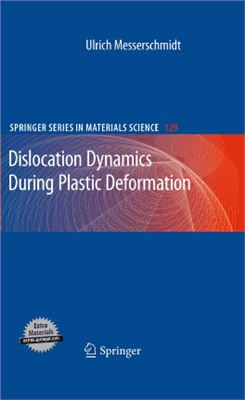Springer-Verlag Berlin, 2010, 503 pages
The book gives an overview of the dynamic behavior of dislocations and its relation to plastic deformation. It introduces the general properties of dislocations and treats the dislocation dynamics in some detail. Finally, examples are described of the processes in different classes of materials, i.e. semiconductors, ceramics, metals, intermetallic materials, and quasicrystals. The processes are illustrated by many electron micrographs of dislocations under stress and by video clips taken during in situ straining experiments in a high-voltage electron microscope showing moving dislocations. Thus, the users of the book also obtain an immediate impression and understanding of dislocation dynamics.
Part I describes the dislocation motion in an introductory way suited also for students without prior knowledge in dislocation properties. For easy understanding, the mathematical treatment is presented on a simple level. In Part II, particular materials are discussed covering semiconductors, ceramic single crystals, metals, and alloys including intermetallic alloys and quasicrystals. The whole text is, whenever possible, illustrated by electron micrographs, partly of dislocations under load taken during in situ straining experiments in a highvoltage electron microscope.
The book gives an overview of the dynamic behavior of dislocations and its relation to plastic deformation. It introduces the general properties of dislocations and treats the dislocation dynamics in some detail. Finally, examples are described of the processes in different classes of materials, i.e. semiconductors, ceramics, metals, intermetallic materials, and quasicrystals. The processes are illustrated by many electron micrographs of dislocations under stress and by video clips taken during in situ straining experiments in a high-voltage electron microscope showing moving dislocations. Thus, the users of the book also obtain an immediate impression and understanding of dislocation dynamics.
Part I describes the dislocation motion in an introductory way suited also for students without prior knowledge in dislocation properties. For easy understanding, the mathematical treatment is presented on a simple level. In Part II, particular materials are discussed covering semiconductors, ceramic single crystals, metals, and alloys including intermetallic alloys and quasicrystals. The whole text is, whenever possible, illustrated by electron micrographs, partly of dislocations under load taken during in situ straining experiments in a highvoltage electron microscope.

